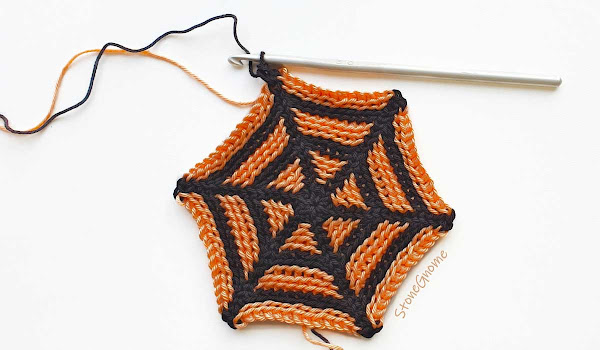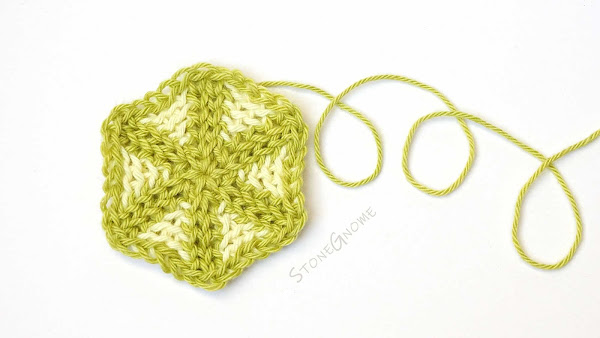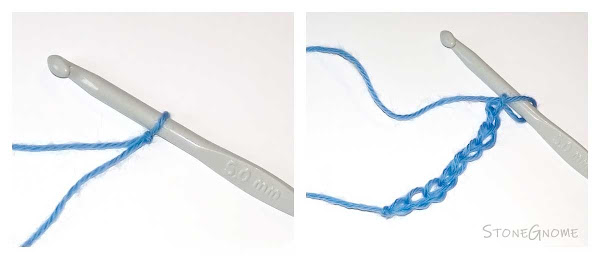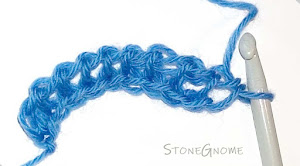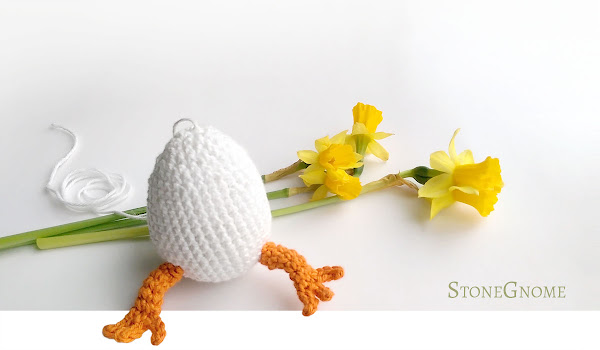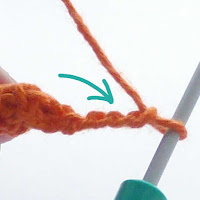Here is a nice little FREE spider web pattern.
ss = slip stitch
ws = waistcoat stitch
-blo = back loop only
** = repeat all the way around
A waistcoat stitch is a single crochet stitch, where you insert the hook between the legs of the previous stitch.
Foundation
Note. Work 2 ws in the first stitch of the round too, but skip the color change.
Finish Off
Cut the yarn.
Expand the last loop till the yarn end is through.
Weave in the ends.
Use it for a coaster or make more rounds and use it as a table topper. Once you get the pattern it is very simple and you decide how big you want it.
Yarn and Hook Suggestions
You can make it of any yarn you want and then a relatively large hook. Btw, I recommend a dark but NOT BLACK yarn, to begin with. It is VERY difficult to find the right places to insert the hook, when using black yarn and working with waistcoat stitches.
I’ve tried two combos that worked well for me:
Mixed Fingering Yarn (Semi-light)
Mixed Fingering Yarn (Semi-light)
- Wool yarn blend (orange) and cotton yarn (black). Both with yardage around 210m/50gr (230yds/1.76oz)
- Hook size 4 mm (US G-6)
Cotton Yarn - Fingering
- Cotton yarn for amigurumi with yardage around 170m/50gr (186yds/1.76oz)
- Hook size 5 mm (US H-8)
If you are making a coaster meant for warm chocolate, tea, or coffee, you should use pure cotton yarn.
Instructions
The spider web pattern is based upon Tessa’s Triangles (a hexagon pattern). You can find tips and secrets in Tessa’s Triangles that can be useful for the spider web as well.
Abbreviations
sc = single crochet stitchss = slip stitch
ws = waistcoat stitch
-blo = back loop only
** = repeat all the way around
A waistcoat stitch is a single crochet stitch, where you insert the hook between the legs of the previous stitch.
Start with the web color (dark).
Foundation
6 loose sc in a magic ring. Add a stitch marker between the legs of each stitch if it helps you.
Join the round with an ss-blo in the first sc.
Note. This is a tricky part as the first sc can be pulled at so much, that you can’t find where to insert the hook when doing the ws. This is why I recommend attaching stitch markers right after making the magic ring.
Round 1)
Note. This is a tricky part as the first sc can be pulled at so much, that you can’t find where to insert the hook when doing the ws. This is why I recommend attaching stitch markers right after making the magic ring.
Round 1)
*ws in the current sc (change color to orange while pulling up the last loop of the ws),
ss-blo in the next sc while changing color again *
ss-blo in the next sc while changing color again *
Note. Work the final ss-blo into the first ws of the round.
Round 2)
Round 2)
*ws in the current ws (change color to orange while pulling up the last loop of the ws),
ss-blo in every ss,
ss-blo in every ss,
ss-blo in the next ws while changing color *
Round 3-4)
Repeat round 2
Round 5-6)
Repeat round 2, but without the color changes.
More Rounds
Work round 2-6 as many times as you want.
Repeat round 2
Round 5-6)
Repeat round 2, but without the color changes.
More Rounds
Work round 2-6 as many times as you want.
Final Two Rounds
Round 7)
Repeat round 2
Round 8)
ws in the current ws (change color to orange while pulling up the last loop of the ws),
* ss-blo in every ss,
ss-blo in the next ws while changing color,
ss-blo in the next ws while changing color,
2 ws in the current ws (change color to orange while pulling up the last loop of the second ws) *
Note. Work 2 ws in the first stitch of the round too, but skip the color change.
Finish Off
Cut the yarn.
Expand the last loop till the yarn end is through.
Weave in the ends.
Happy Halloween!
